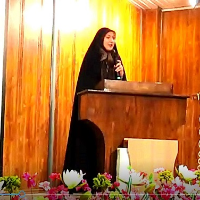Petrography and application of mineral chemistry and thermobarometry of amphibolites in Jandaq metamorphic complex: Evidence of paleo-tectonic events in Central Iran
Article Type:
Research/Original Article (دارای رتبه معتبر)
Abstract:
Based on field observation and petrographic evidence, by progress in metamorphic degrees, a wide variety of metabasites have formed following the metamorphism at amphibolite facies (metamorphism M1) in the east of Jandaq. Thermobarometry of plagioclase- amphibole pairs indicate temperature ranges were 642-692ºC and 688-712 ºC for epidote amphibolites and garnet amphibolite, respectively, in a pressure range of 8 and 11 Kbar, correlating with transition from middle amphibolite to upper amphibolite facies. In addition to this metamorphic phase, petrographic signatures indicate further metamorphic phases concerning this region's geological phenomena. Based on brittle deformation in amphiboles, and epidote and quartz formation in their fractures, these rocks have undergone some degrees of retrograde metamorphism (<700 ºC; metamorphism M2) at greenschist to lower amphibolite facies. Rock foliation and mineral orientation, aggregate shape preferred orientation (ASPO) of titanite crystals along foliation, and syn-tectonic euhedral garnets indicate prograde metamorphism toward amphibolite-upper amphibolite facies (metamorphism M3). Finally, under greenschist facies condition, minerals such as chlorite and actinolite were formed in these rocks (metamorphism M4). The formation of chlorite and actinolite in the rims of the primary crystals shows that these rocks were finally affected by metamorphism at greenschist facies (M4 metamorphism).
Keywords:
Language:
Persian
Published:
Geosciences Scientific Quarterly Journal, Volume:32 Issue: 126, 2023
Pages:
119 to 142
https://magiran.com/p2520162
سامانه نویسندگان
مقالات دیگری از این نویسنده (گان)
-
Iran, Evidence from petrography and stable oxygen isotope in Chah Zard meta-granite in the east of Jandaq
Mehdi Allahyari Abhari, *, Chris Harris, Mohammadreza Ghorbani
Petrology,



